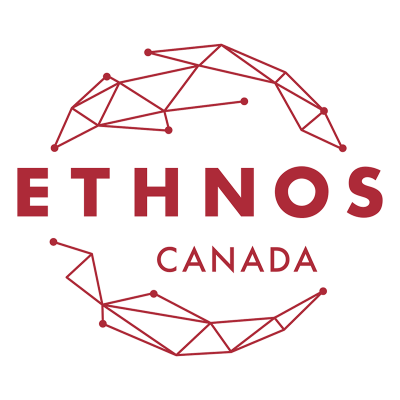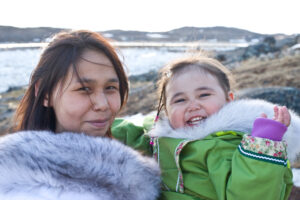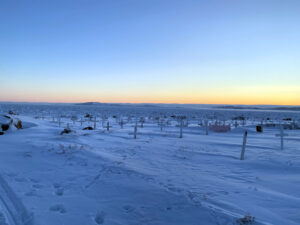“We plan to start a short preparatory course for those going out under New Tribes Mission. We are pioneering with the gospel, and we must know our job and be prepared to meet it. Though we place first emphasis on spiritual qualifications, a missionary must know how to use his hands as well as his head. Pioneer missionary work must be revolutionized if we hope to reach the last tribe in our generation.”
This announcement appeared on the back of the first issues of the mission’s magazine, Brown Gold, less than a year after the mission’s founding in 1942.
Eighty years later, Ethnos’ training continues to prepare people for church planting in a cross-cultural context. Over the years, the training has been continually refined in order to more effectively achieve that goal of reaching the last people group.
History
With the need for training defined, mission leadership prayerfully searched for a location to hold this course, and the Lord answered. The Hi-Hat Club, formerly an exclusive nightclub in downtown Chicago, was purchased and quickly transformed into the New Tribes Missionary Center.
September 12, 1943, saw the centre opened with a missionary rally. Days later, on September 20, the first preparatory course started with 40 students.
Ken Johnston, one of New Tribes Mission’s early missionaries and former chairman, recalled in The Story of New Tribes Mission that “the purpose of the course was to impart a clear-cut vision of New Tribes Mission’s world objective as well as to present, in a practical way, how to approach the job of reaching the last tribe with the gospel.”
Lance Latham, a mission leader and founder of AWANA, taught Bible doctrine, with the gospel message of grace being core to the curriculum.
Linguistics was taught by early missionary Dean Pittman, who had taken the Summer Institute of Linguistics course as a member of the first group of missionaries.
The Story of New Tribes Mission further mentions, “There was a smattering of field medicine, carpentry, mechanics, photography as well as other relevant topics. … During the early years, the curriculum constantly took on new aspects as needs became apparent.”
So many desired to attend that it was necessary to schedule another class before “this short preparatory class,” as the November 1943 Brown Gold magazine called it, was completed. The next class started in February 1944.
Originally, the course took place at night, allowing candidates to be employed during the day. But soon, more time was needed to cover the topics. Classes were shifted to the morning hours, and students could work part-time.
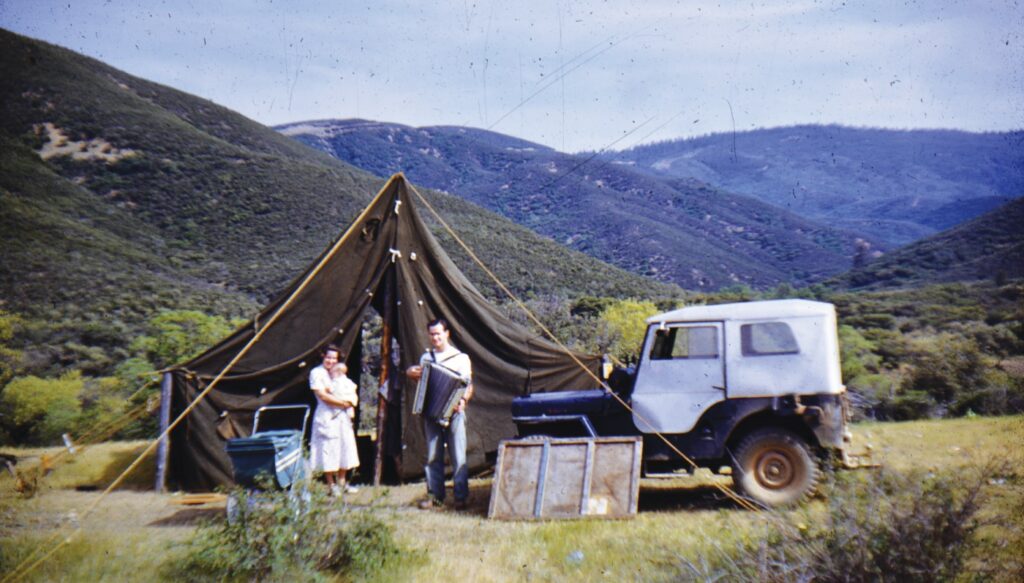
“Boot Camps”
Though the training at the former Hi-Hat Club was being constantly improved, leadership saw that the city context did not match the rugged contexts where the missionaries would go. They looked for a property to use as a “boot camp.” God provided the deserted Civilian Conservation Corps Camp, known as Fouts Springs, in the Mendocino National Forest in California.
The camp was prepared, and in January 1945, the first boot camp course began. Bible and linguistics continued to be core subjects. Field medicine, photography, hair cutting, soap making, butchering, gardening, canning, breadmaking, hiking, survival, swimming, boating, carpentry and mechanics were all taught. Students maintained the camp as part of their training.
To some of the candidates, this lifestyle was very new, but such were the skills needed to live in the harsh conditions where the unreached lived. Students also learned how to succeed without many of the normal conveniences of the time. They had no running water in the cabins and used wood for cooking and heating.
The training pushed the students outside their comfort zones. For some it was the hardest thing they had ever done, but it was suitable training for the realities they would experience on the field.
In his book, Ken Johnston summed up that time of training this way: “The work was hard; the living, rough; the fellowship, sweet. Through it all, the missionary candidates were learning to trust the Lord. If a missionary was going to get discouraged by primitive conditions, it was better that he experienced this in boot camp rather than on the field. How valuable this practical approach proved to be!”
Growth in numbers led to the issue of having too many students together in one place, not allowing for the individualized attention that mission leadership desired. So, over the years, regional boot camp properties were acquired around the USA and Canada and fitted for the training, each one with its own story of God’s mighty provision.
Jungle Camp
Though the missions course, or “boot camp” as it was called, offered excellent training to missionary candidates, mission leadership saw the need to add a “jungle camp” experience to give training more closely simulated to what candidates would experience on the field.
In the summer of 1950, the mission’s first jungle camp took place. Candidates hiked over a mountain near Fouts Springs. “They were taught how to fish, boat, swim and a little about how to maintain an outboard motor. They learned also how to do lifesaving and artificial respiration,” Ken’s book recounts.
Along with practical skills, there was an emphasis on being able “to improvise and being self-sufficient.”
“At jungle camp, as in the rest of the training, the leaders did not merely focus on the academic and physical. All the practical training in the world could never replace faith in God! Some had to stop right in the middle of a hard or fearful task to ask the Lord for strength and wisdom to finish. What a joy it was to see them go on to finish in ‘the power of His might’! Equally important as acquiring new skills and techniques was this opportunity to experience firsthand the grace of the Lord as He led them through new and trying experiences.”
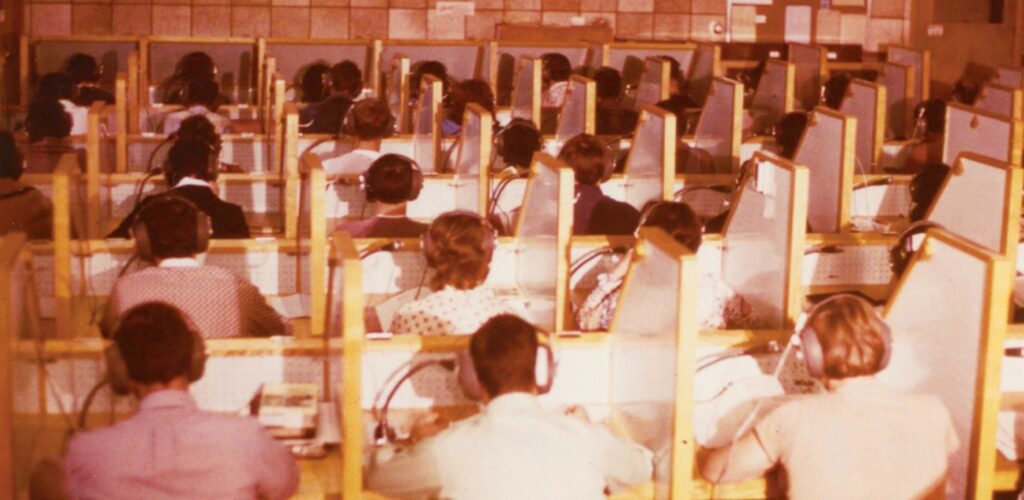
Language School
“Linguistics had been an essential part of the mission’s training course even with the first group of missionaries. … We saw how profitable linguistic training was for those on the field,” Ken Johnston wrote.
Because of the importance of such study, mission leadership saw the need for a separate language school for NTM’s missionaries. In 1955, the first classes of the New Tribes Mission Language and Linguistics Institute were held in Wisconsin. Students from the boot camps came to Wisconsin to take this course.
“The linguistics course — how to reduce an unwritten language to writing — was very much like a college summer course at that time, with every student being taught a smattering of phonetics, phonemics, syntax, and morphology,” Ken’s history of the mission recalls. Literacy, Bible translation and culture were also taught.
As experience from the fields made its way back to the language school, the classes were strengthened and refined. New techniques were added, and though language study was still difficult work, the missionaries were better equipped to meet the challenge.
Program Improvements
While improvements and adjustments were continuously being made to the missionary training, it received a more thorough overhaul starting in the mid-1990s.
“A lot of our works were discussing phaseout on the field,” explained David Mough, director of education at Ethnos360 Training (ETR). Originally, the mission used a threefold litmus test. The missionaries could phase out when church plants were self-sustaining, self-propagating and self-functioning. These are good and correct standards. But how do you determine exactly when those are in place? “We needed a more detailed model,” David continued.
Many missionaries on the field were sharing insights that continued to improve the training program. Classes on culture, worldview, animism and outside influences were added or improved.
These classes helped missionaries to understand better the unknowns they were encountering on the field, to persevere through them and to teach better in light of them. This also helped with missionary retention on the fields.
Another significant change was the switch to Foundational Bible Teaching based on Trevor McIlwain’s chronological Building on Firm Foundations.
Learn more about the history of Ethnos training missionaries in Canada here.
